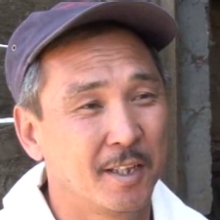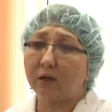Herd animals are part of the history and nomadic culture of the Kyrgyz Republic. From the country’s 5.5 million sheep and goats, 1.3 million cows, on down to its 120 camels, the Kyrgyz people rely on the livestock for income, trade, and as a reserve against emergencies.
Agriculture is a big part of the Kyrgyz economy, generating nearly 25 percent of the country’s GDP. Pasture-based livestock production and export of animal products, like meat and milk, provides employment and livelihoods for rural communities, which comprise two-thirds of the country’s population.
That’s why access to vaccines, equipment, and new technology are so important for the Kyrgyz Republic’s 3,500 veterinarians, says Marat Sydygaliev, the ex-Deputy Director General of the State Veterinary Department.
“I think the work of veterinarians is very important because we all care for the health of animals and humans. We try to protect humans from animal-related diseases, and that way we protect our economic interests as well.” And, he adds, herd animals are important because the Kyrgyz people “have traditionally been livestock producers, and it is part of our tradition to take care of livestock.”




